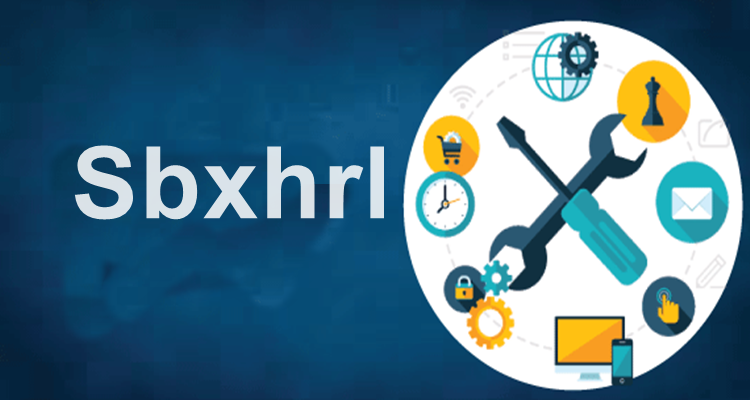Introduction to SBXHRL
Are you looking for a way to excel in the field of Human Resources? SBXHRL may be the answer for you. SBXHRL stands for Strategic Business Execution Human Resources Leadership and helps to ensure successful Human Resources practices by utilizing strategic leadership. In this article, we explore what SBXHRL is, the benefits it provides, and how to develop effective strategic leadership skills. We will also provide case studies and best practices for implementing SBXHRL in practice. Let’s get started and discover how SBXHRL can help you achieve HR success.
What is SBXHRL?
SBXHRL is a strategic leadership initiative that focuses on helping human resources (HR) teams in organizations to succeed. The goal of SBXHRL is to foster organizational growth and effectiveness by providing HR teams with the tools and resources they need to make sound decisions, lead with confidence, and build high-performing teams.
At its core, SBXHRL is based on a set of beliefs and values that recognize the critical role HR professionals play in the success of organizations. This framework encourages HR professionals to understand their organizations’ culture and values, think strategically, and apply their knowledge and skills to address a wide range of challenges within the organization.
In addition to its core philosophies, SBXHRL also provides HR teams with the resources and tools they need to excel in their roles. These include the latest research, best practices for managing HR teams, detailed guidance for senior leaders, tools for organizational assessment, and strategies for building successful teams.
Finally, SBXHRL offers a comprehensive suite of services that can help HR teams to develop, implement, and manage their strategies. These services include professional coaching and consulting, certification programs, and tailored solutions for HR departments.
In summary, SBXHRL is a comprehensive approach to helping HR professionals and organizations reach their goals and build high-performing teams. By providing resources, tools, and services, SBXHRL allows HR professionals to take the lead in their organizations and create an environment of success.
The Benefits of SBXHRL
The Strategic Business Excellence Human Resources Leadership (SBXHRL) program provides organizational leaders with the necessary tools and resources to effectively manage human resources and maximize HR success. SBXHRL focuses on three foundational aspects: strategic leadership, human resources management, and business process excellence. By integrating these three pieces, the program provides participants with the essential components to build a successful HR strategy.
The primary benefit of SBXHRL is the ability to positively influence organizational performance and outcomes. Strategic leadership enables organizations to create an environment for change and growth. Through the HR management component, leaders gain the tools and skills to recruit, develop, and retain top talent. With business process excellence, participants learn to maximize efficiency, reduce costs, and achieve desired results.
SBXHRL also provides leaders with the necessary knowledge and tools to promote employee wellbeing. The program provides strategies to build an environment that nurtures positive relationships between managers and employees. This can lead to improved job satisfaction, decreased turnover, and higher levels of team engagement.
Finally, the program equips leaders with the resources to develop and implement HR strategies that align with their organization’s overall goals. By using the SBXHRL framework, participants gain insight into how to create and execute strategies that will lead to increased productivity, improved performance, and greater organizational success.
Overall, SBXHRL provides the necessary components to effectively manage human resources, optimize workflows, and create an environment that encourages growth and success. Through strategic leadership, HR management, and business process excellence, the program provides the tools and skills to build a comprehensive HR strategy that aligns with organizational goals and promotes a productive work environment.
Strategic Leadership in HR
The success of an organization and its Human Resources (HR) department lies in the hands of its leaders. Strategic leadership in HR is an essential component for creating strong, productive business relationships and for maintaining a positive workplace culture. This is where SBXHRL comes in.
SBXHRL stands for Strategic Business and Human Resources Leadership. It is a set of principles and strategies that focus on the importance of the relationship between business and HR leaders. The goal of SBXHRL is to help HR leaders become more effective by developing their leadership skills and by understanding the nature of strategic business decisions.
By utilizing the concepts of SBXHRL, HR leaders are able to better identify and address the needs of their organization, both on short- and long-term scales. These leaders also learn how to better manage their team and resolve disputes within their organization. SBXHRL provides HR leaders with the tools to facilitate efficient and effective working relationships across the business.
In order to successfully implement SBXHRL into their organizations, HR leaders need to have the necessary knowledge, skills, and experiences. This includes understanding and applying the principles of strategic leadership, knowing their organization’s goals and objectives, and having a clear vision of how to achieve them. HR leaders must also be able to effectively communicate their ideas and collaborate with other members of the organization, including senior and executive leaders.
SBXHRL enables HR leaders to become better strategic thinkers, managers, and facilitators. By utilizing the concepts of SBXHRL, HR leaders are better able to create and maintain strong, productive relationships with their organization’s stakeholders. This helps to improve the overall performance of the organization and strengthens its HR department. As a result, HR leaders become a valuable asset to their organization and can enhance its success.
Defining Strategic Leadership
Strategic leadership is the process of leading an organization through the development and implementation of goals, objectives, and strategies to maximize success. It requires a combination of skills, guidance, and decision-making to ensure the organization is able to reach its intended outcomes. SBXHRL, which stands for Strategic Business Excellence Human Resources Leadership, is a unique approach to HR management that focuses on strategic leadership to achieve success.
SBXHRL emphasizes the importance of defining the organization’s goals and objectives, and using that as the basis for developing a strategic leadership plan. The plan should include a comprehensive analysis of the current state of the organization, as well as the future state the organization should strive to achieve. By understanding the organization’s current and future capabilities, SBXHRL strategic leaders are better able to make informed decisions on how to best move the organization forward.
The next step in SBXHRL strategic leadership is to develop a plan to successfully implement the organization’s strategy. This includes establishing the roles and responsibilities of each team member, as well as creating and executing action plans to ensure the strategy is followed. In addition, it is important for strategic leaders to build strong teams, as well as motivate and inspire all team members to stay focused and committed to the organization’s mission and goals.
Finally, SBXHRL leaders must be able to effectively communicate and engage with other stakeholders, such as shareholders, customers, and the public. By clearly communicating the organization’s mission and goals, strategic leaders are able to ensure that stakeholders are aware of the organization’s progress and action to achieve those goals. Furthermore, strategic leadership involves the ability to build relationships with employees, suppliers, and other key stakeholders, to ensure the organization is able to continuously improve and innovate.
In summary, SBXHRL is a unique approach to HR management that focuses on strategic leadership to achieve success. Through thorough analysis of the current and future state of the organization, strong team-building, and effective communication and engagement, strategic leaders are better able to ensure the organization reaches its desired outcomes.
The Role of Strategic Leadership in HR
Strategic leadership is key to achieving success in Human Resources (HR). A successful HR strategy can create a productive, collaborative, and innovative culture that encourages growth and fosters a culture of learning. The SBXHRL (Strategic Business Xpress Human Resources Leadership) framework provides an effective way to develop strong leadership skills and techniques for HR professionals.
The SBXHRL framework is based upon the concept of Strategic HR Leadership, which is the basis for creating an effective HR organization. This framework focuses on identifying and aligning HR competencies, developing effective HR strategies, and creating a positive, supportive environment conducive to fostering organizational growth and success. Under this framework, HR professionals are responsible for creating and maintaining a healthy working environment, understanding and responding to changing business needs, and communicating effectively with stakeholders.
The SBXHRL framework requires excellent interpersonal skills and communication, a strong understanding of the organization’s goals and objectives, and a proactive approach to managing change. Strategic HR leadership requires strong problem-solving skills, creativity, collaboration, and the ability to analyze and interpret data. In addition, it requires a broad understanding of the internal and external environment in order to be able to identify potential risks and opportunities.
At the core of this framework is the focus on aligning HR processes and practices with the organization’s goals and objectives. By creating an effective strategy and implementing appropriate HR practices, the HR professional can contribute to the organization’s success by increasing job satisfaction, reducing costs, and creating a culture of learning. In addition, the HR professional can help to identify and address legal and ethical issues related to the workplace.
The SBXHRL framework provides a comprehensive approach to successful HR management. Through this framework, HR professionals are better equipped to assess the current state of the organization, identify opportunities for improvement, and implement effective strategies for achieving organizational goals. By utilizing this framework, HR professionals can ensure the highest levels of success, both in terms of organizational results and individual performance.
Developing Effective Strategic Leadership Skills
Strategic leadership is a key component of achieving success in Human Resources (HR). The acronym SBXHRL – Strategic Business eXecutive Human Resources Leadership – summarizes the traits necessary to become an effective leader in the HR field. SBXHRL involves three main components: understanding the business environment, effectively managing the human resources processes, and developing key skills necessary to lead an HR team.
To understand the business environment, an HR leader must consider the competitive market, customer needs, and financial objectives. A successful HR leader must also be aware of the organization’s mission and values, which serve as the foundation for HR decisions. Strategically creating, developing, and maintaining relationships with internal and external stakeholders is also essential, as it helps to maintain organizational effectiveness.
Managing the human resources processes is the next component of SBXHRL. This involves investing sufficient resources to ensure a high-performing team, determining appropriate and effective human resources policies and procedures, properly motivating and rewarding employees, and continuously consulting with management and employees for feedback and improvement.
Finally, the development of key leadership skills is essential for successful HR leadership. This includes decision-making, problem-solving, communication, negotiation, and influence. A successful HR leader must be able to effectively use all of these skills, both independently and in collaboration with colleagues.
In conclusion, successful HR leadership requires the development of strategic leadership skills, as outlined in SBXHRL. By understanding the business environment, managing the HR processes, and developing key skills, an HR leader can guide their team towards achieving success.
SBXHRL in Practice
The concept of SBXHRL – Strategic Business and Human Resources Leadership – is rapidly gaining popularity among Human Resources professionals and other business leaders. As the name implies, SBXHRL is the practice of leveraging key strategic processes to increase organizational success through better human resource management. Those who put SBXHRL into practice can create the conditions necessary to foster employee engagement, enhance organizational performance, and ultimately reach business goals.
So, what exactly is SBXHRL and how can putting it into practice help businesses reach their goals? The cornerstone of SBXHRL is the idea that HR functions should align with the overall objectives, strategy, and culture of the organization. To put SBXHRL into practice, HR practitioners must understand the business goals, current HR systems, industry trends, and the internal and external environment. They must also be able to develop and implement strategies to ensure continued success.
For example, an organization looking to increase profitability may choose to invest in HR initiatives such as revising job descriptions, implementing performance evaluations, and providing additional training to existing employees. Such strategies can improve employee engagement, enhance productivity, and allow an organization to reach its objectives.
In addition to understanding the organization’s goals, HR practitioners should also be able to recognize potential issues and proactively plan for appropriate responses. This includes developing policies and practices that promote a culture of transparency and collaboration; fostering strong working relationships between HR and other departments; and promoting diversity, inclusion, and equal opportunity in the workplace. Through these methods, SBXHRL practitioners can create an environment of trust and respect that leads to better team performance and helps the organization reach its goals.
Finally, HR practitioners should be able to assess the impact of their strategies on the organization. They should be able to track progress, identify areas of improvement, and ensure that their strategies are having the desired effect. Tracking progress helps to ensure that investments in HR initiatives are delivering real value and that the organization is on a path to success.
In conclusion, the concept of SBXHRL is a powerful tool for Human Resources professionals and other business leaders. By leveraging key strategic processes and understanding the organization’s objectives, HR practitioners can create an environment of trust and respect that leads to better team performance and helps the organization reach its goals. By tracking progress and assessing the impact of their strategies, they can ensure that their investments in HR initiatives are delivering real value and that the organization is on a path to success.
Case Studies
In order to understand the impact that SBXHRL can have on an organization’s HR success, it is important to look at case studies of organizations who have benefited from SBXHRL. These case studies provide insight into how different organizations have used SBXHRL to improve their HR success and provide valuable lessons for other organizations.
One case study that illustrates SBXHRL’s success comes from a medium-sized software company. This company had experienced a period of rapid growth and was struggling to keep up with the demands of their expanding workforce. They turned to SBXHRL for help.
After adopting SBXHRL, the company thoroughly restructured their HR department. They started by focusing on employee engagement, boosting morale and providing access to better benefits. With the help of SBXHRL, they also implemented a comprehensive training program that enabled existing and new employees to become more productive and effective in their roles.
With these changes in place, the company saw a dramatic improvement in employee satisfaction, which led to increased efficiency and productivity. They also experienced a significant reduction in staff turnover and an increase in employee retention. The company was so pleased with the results, that they decided to adopt SBXHRL as an integral part of their HR success strategy.
Another case study looks at a large non-profit organization that was struggling with a chronically high staff turnover rate. With the help of SBXHRL, the organization was able to develop and implement an effective recruitment strategy that enabled them to attract and retain the best employees. They also implemented a comprehensive training program to ensure that employees felt confident and supported in their roles.
With the help of SBXHRL, the organization was able to significantly reduce the staff turnover rate and improve their overall employee satisfaction. Additionally, their overall productivity and efficiency improved, resulting in a better use of resources and more effective management of their workforce.
These two case studies illustrate how SBXHRL can be used to improve HR success. By focusing on employee engagement and providing access to better benefits, organizations can ensure that their employees are happy and productive. Additionally, investing in training and recruitment can help organizations to attract and retain the best employees. By implementing SBXHRL, organizations can significantly improve their HR success and achieve their goals.
Best Practices for Implementing SBXHRL
As organizations seek to reduce costs, increase efficiency, and improve organizational performance, implementing SBXHRL is becoming more and more popular. SBXHRL stands for Strategic Business Execution HR Leadership, and it involves empowering HR leaders with the necessary strategic thinking, analytical skills, and technology to do their jobs more effectively and efficiently.
Here are some best practices for implementing SBXHRL:
1. Establish a Clear Vision and Mission: Before your HR team can get started with the process of implementing SBXHRL, it’s essential that you have a clear vision and mission. This will provide HR leaders with a clear set of goals and objectives that they can work towards and measure progress against.
2. Measure and Track Performance: With an SBXHRL system, you’ll have access to key performance metrics and analytics that can help you track progress, benchmark performance, and identify areas for improvement. These metrics should also be used to monitor compliance and identify areas of risk.
3. Leverage Technology: To realize meaningful gains in efficiency and productivity, your HR team should leverage the latest HR technologies. These might include cloud-based software solutions, automated data collection, and analytics tools.
4. Create an Engaging Culture: While technology has a role to play in SBXHRL, it’s important to remember that culture plays an even bigger role in optimizing HR practices. Create an engaging environment in which HR leaders are empowered to take risks, experiment, and explore.
5. Provide Ongoing Training and Development: To ensure that the HR team is able to successfully implement SBXHRL, it’s essential to provide ongoing training and development. Instilling the latest skills and knowledge will ensure that HR leaders can continue to stay ahead of the competition and maximize the potential of your HR team.
By following these best practices, your organization can ensure that you’re making the most of SBXHRL. With a clear vision, metrics to measure progress, leveraging technology, an engaging culture, and ongoing training and development, you can ensure that your HR team is ready to maximize their potential.






Recent Comments